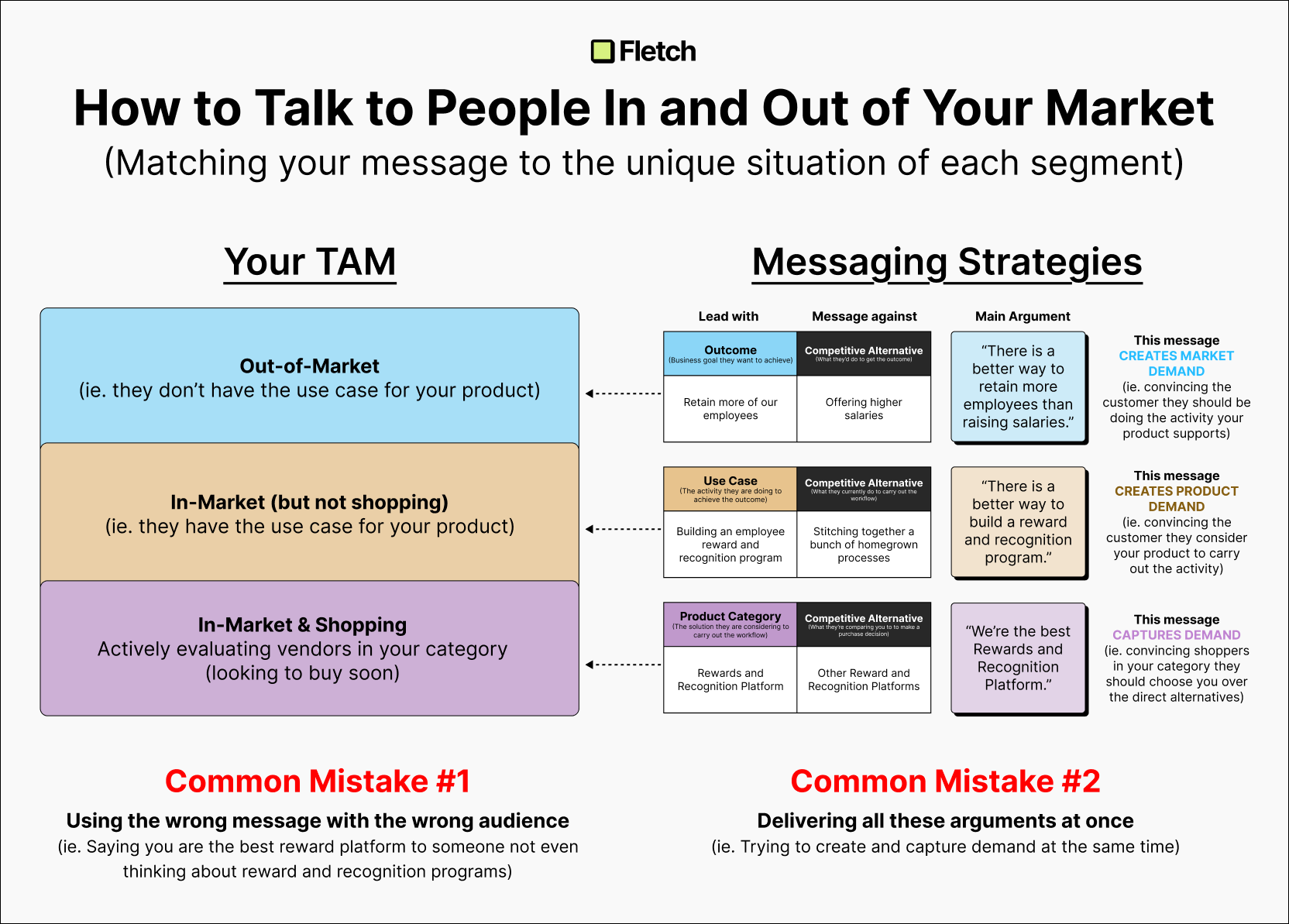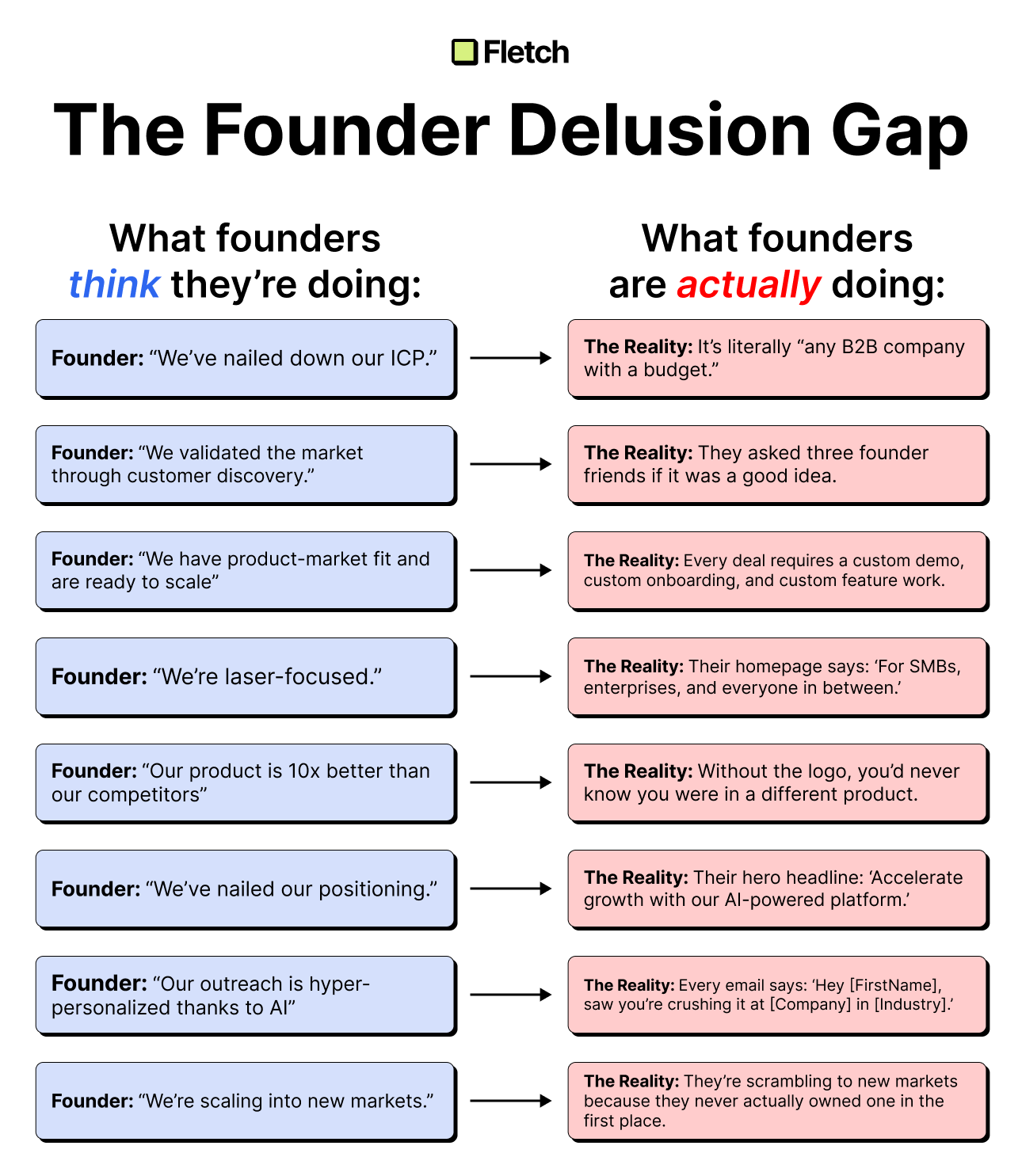Creating A Powerful Product Message

How to create a powerful product message
🎯 By being specific on use case AND persona
Somewhere along the line of “scalable” software…
We have tricked ourselves into thinking that messaging is “scalable”.
💢 Messaging does not scale like software
Because the segments and personas are all different:
→ Different situations
→ Different problems
→ Different desires
And bad messaging tries to cover all these situations at the same time
❌ The result is broad messaging
So what does good messaging look like?
🔥 The most powerful messaging is PERSONAL.
The person receiving the message should think:
“Wow, they are describing my exact situation!”
There are 2 levers to pull to make your message more personal:
1️⃣ The WHO (Persona & Companies)
Having a persona focus is powerful.
It sets the boundaries of for what you might cover in your message.
(Both for the receiver and the message creator)
💢 But be careful of stacking too many things into persona messages or you run the risk of messaging overload.
Take Loom for example (Persona Message — Green Box)
↳ By only anchoring on persona, multiple use cases start to show up.
2️⃣ The USE CASE
Anchoring to a use case narrows the situation.
It adds context to the problem a customer might have, and starts to highlight the “why” behind the problem.
And the more we understand the situation, the higher chance we have of landing a personalized message that resonates.
💢 But be careful of generic use cases — They are far less powerful.
Take Loom for example (Use Case Message — Orange Box)
↳ You can see how the resulting message is broad and less likely to resonate.
1️⃣*️⃣2️⃣ Persona & Use Case Combo
The best approach is to combine these 2 levers.
💌 Use them to triangulate a specific message for a specific persona who has a specific use case.
And then repeat the exercise to create a whole matrix of highly targeted messages.
The result?
🚀 An arsenal of highly targeted messages ready to deploy in your GTM

Ben Wilentz
Founder, Stealth Startup





